
Checkmate
Checkmating your opponent is the most crucial goal in chess. Learn the general ideas behind this vital aspect of the game and be on your way to chess mastery!
- What Is Checkmate?
- Types of Checkmates (Checkmating Patterns)
- Checkmate With Two-Rooks
- Checkmate With King And Queen
- Checkmate With King And One Rook
- Checkmate With King And Two Bishops
- Checkmate With King, Bishop, And Knight
- Arabian Mate
- Fool's Mate (Two-Move-Checkmate)
- Scholar's Mate (Four-Move-Checkmate)
- Legal's Mate
- Back Rank Mate
- Smothered Mate
- Anastasia's Mate
- Epaulette Mate
- Boden's Mate
- Dovetail Mate
- Swallow's Tail Mate
- Opera Mate
- Blackburne's Mate
- Damiano's Mate
- Morphy's Mate
- Test Your Skills
- Conclusion
- Video Lesson
What Is Checkmate?
When a king is attacked, it is called check. A checkmate (also known as "mate") occurs when a king is placed in check and has no legal moves to escape. When a checkmate happens, the game ends immediately, and the player who delivered the checkmate wins.
Checkmating your opponent should be your top priority since this will ensure your victory even if you have less material or if you have had a worse position throughout the game. In the position below we can see that White has less material but is able to deliver checkmate.
In olden times, there was no need to alert the opponent if their king was under attack, allowing players to capture each other's king if they were not paying attention to the game. Nowadays, it's illegal to leave a king under attack, and you can't move it to a square that is attacked by your opponent. Because of that, the only way to "capture" a king and end the game is by trapping it.
Checkmating your opponent is one of three ways you can win a chess game. You can also win the game if your opponent resigns or if they run out of time.
Types of Checkmates (Checkmating Patterns)
Types of checkmate, also known as "checkmating patterns," are models that you can use to force a checkmate upon your opponent. Each pattern requires a specific combination of pieces, either from your own army or taking advantage of the placement of your enemy's pieces.
As you get familiar with those patterns, your game will improve. You will become a more efficient attacker, as well as a solid defender.
Here is a list of 20 types of checkmate you should be familiar with:
Checkmate With Two-Rooks
Two-Rooks checkmate is one of the most straightforward basic mating patterns you should know how to perform. Also known as "rook-rolling" or "lawnmower mate," this is how you can checkmate your opponent with two rooks. To do that, you use both rooks to cut down the king and push him to the edge of the board, where he won't be able to escape.

Checkmate With King And Queen
Frequently, pawns are promoted to queens during endgames. For this reason, you should know how to perform this mate. With the help of your king, you can checkmate your opponent's monarch once you force it to one of the edges of the board. The "boxing method" for checkmating with a king and queen vs king is shown below:
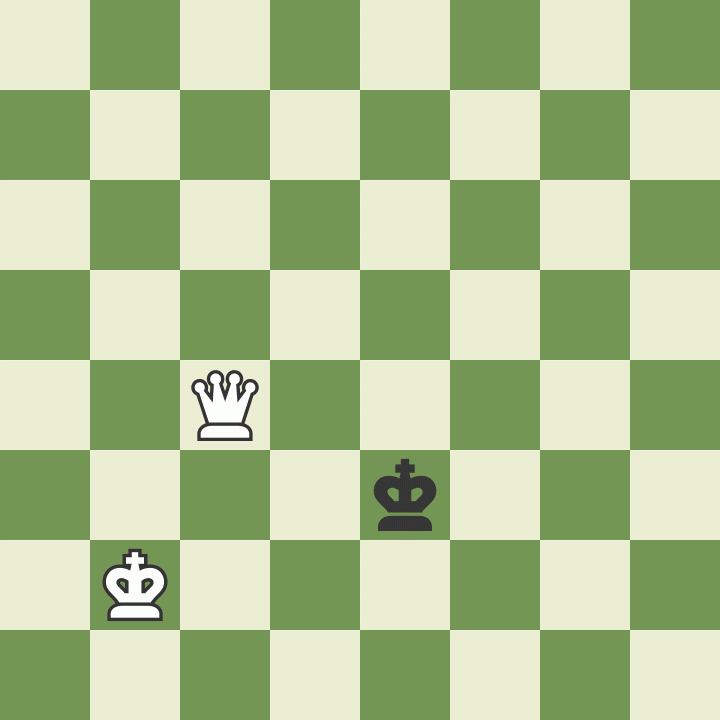
Checkmate With King And One Rook
Another basic checkmate pattern, the idea behind this mate is to push your opponent's king to the edge of the board, use your king to protect the escape squares of the opponent's king, and then use your rook to deliver the final blow.
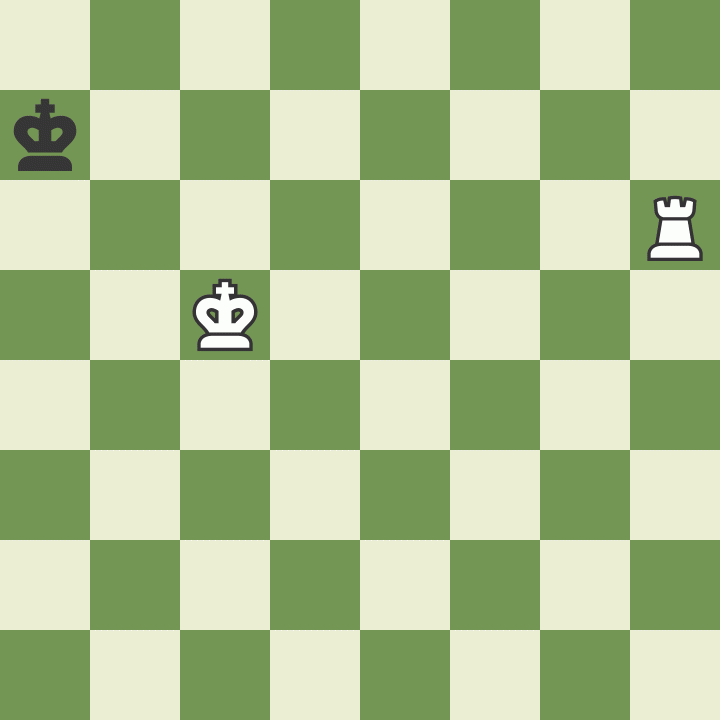
Checkmate With King And Two Bishops
Like many other mating patterns, you first have to force your enemy's king to the edge of the board. After the king reaches one of the sides of the board, you can then push him to one of the corners, and after that, use your king and bishops to end the game.
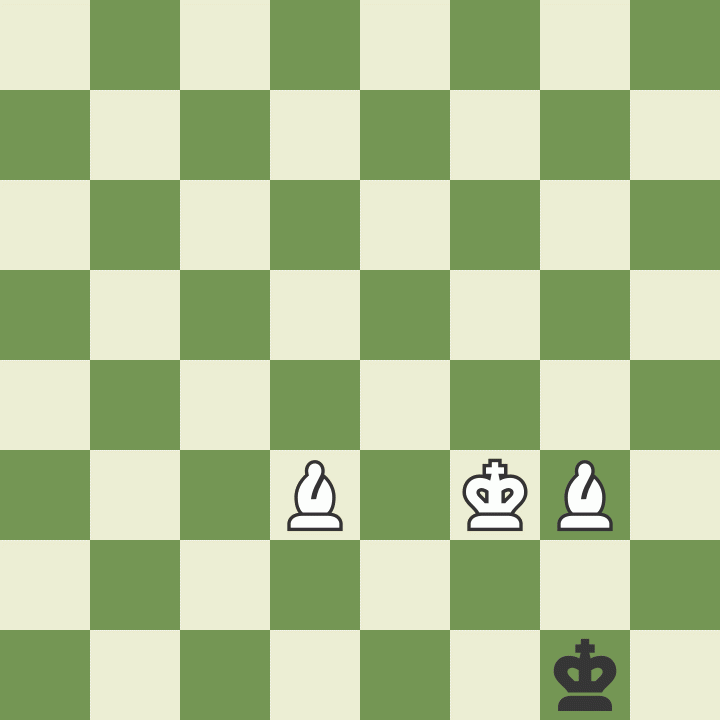
Checkmate With King, Bishop, And Knight
For this mate, you have to coordinate your king, bishop, and knight with precision to create an inescapable "box" that will keep your opponent trapped.
For this mate, you have to take your enemy's king to one of the corners of the board before you start the mating pattern. After that, you will have to force it to the adjacent edge of the chessboard to deliver mate.

Arabian Mate
The Arabian Mate is reached when a knight and rook work together to checkmate the king. The knight protects the rook and also blocks the escape square of the king.
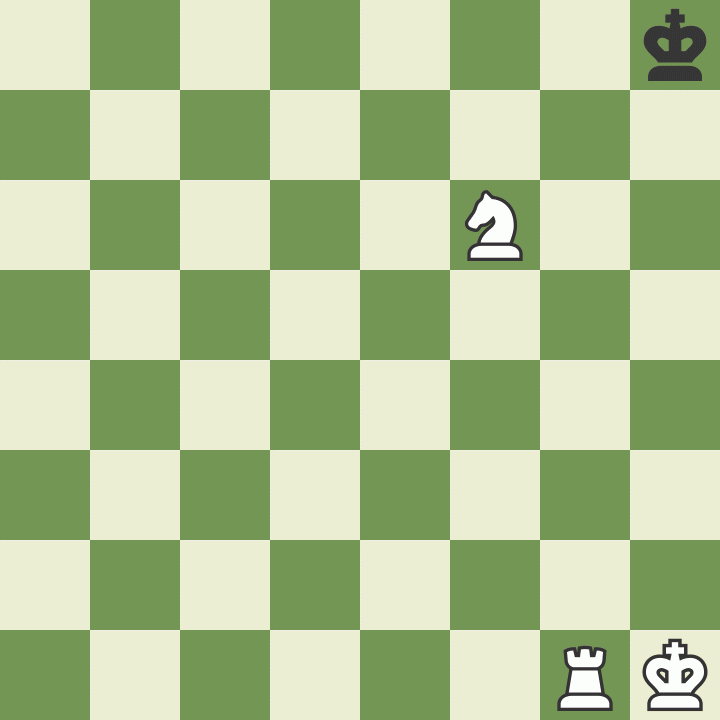
Fool's Mate (Two-Move-Checkmate)
The Fool's Mate is the fastest checkmate in chess, happening only after two moves! To accomplish this feat, you need to play as Black (White can checkmate in three moves), and your opponent must play very poorly. It involves attacking the weak e1-h4 diagonal against White or the e8-h5 diagonal against Black.

Scholar's Mate (Four-Move-Checkmate)
The Scholar's Mate is an opening trap that catches many beginners off guard. It is also a quick mate that can happen after just four moves and involves attacking the weak f2 and f7-squares.
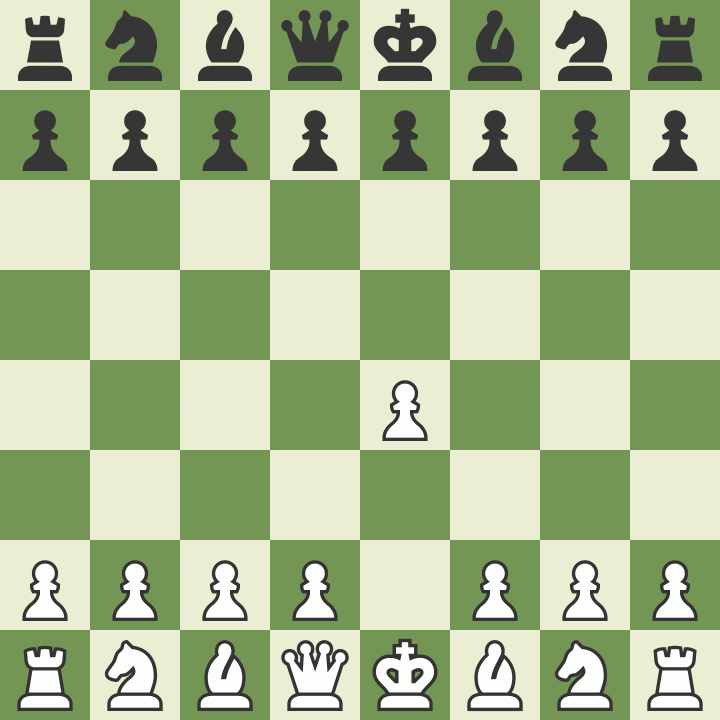
Legal's Mate
The Legal's Mate is another opening trap that comes after one player sacrifices the queen to force a mate. These are the moves that need to be performed by both players for this mating pattern to occur.

Back Rank Mate
The Back Rank Mate is very common in chess, so it's a good idea to be able to identify when this pattern appears on the board.
This mate involves taking advantage of a wall created by your opponent's pieces in front of their king, leaving just one rank for it. You can then use a rook or a queen to attack that rank, checkmating your opponent.
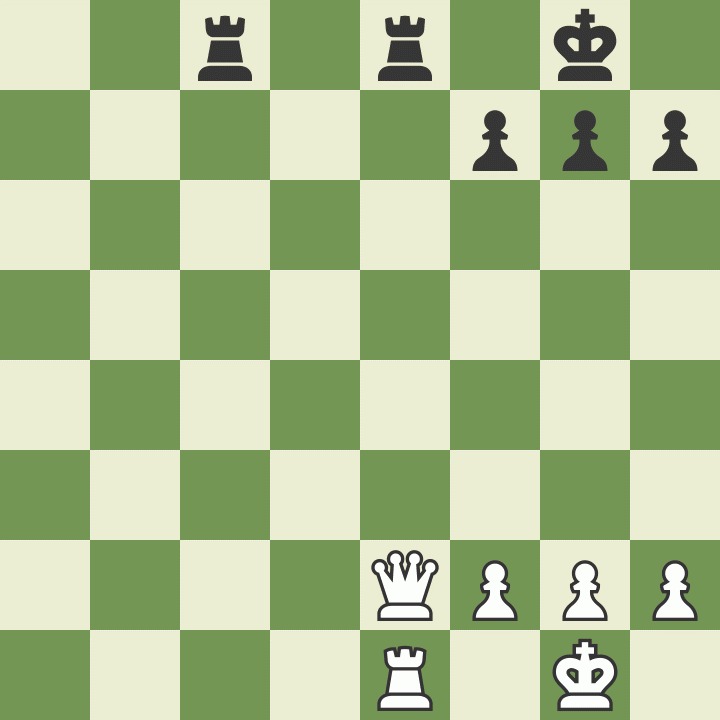
Smothered Mate
The Smothered Mate gets its name from the fact that the king has no "breathing room" and thus cannot escape any threat. That's when a knight can jump in and take advantage of the king's restricted moves to end the game in style!
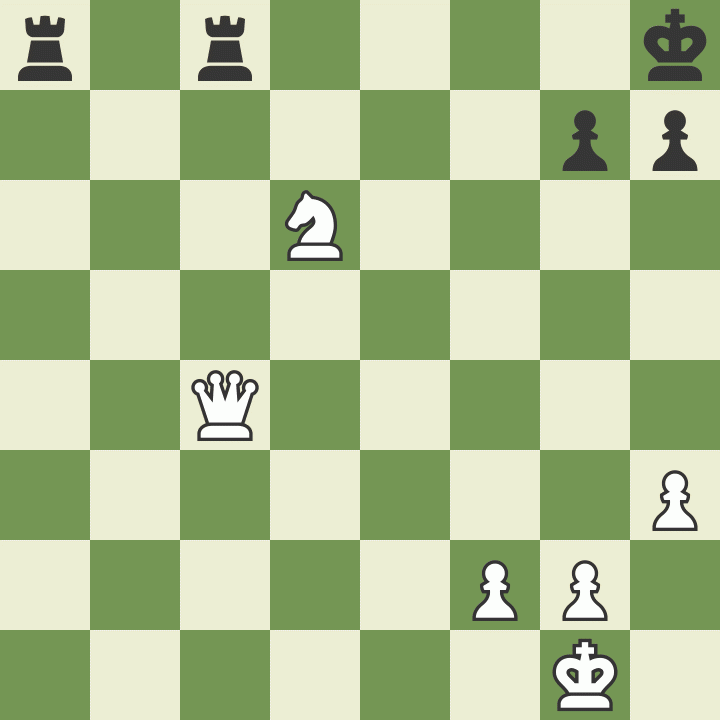
Anastasia's Mate
This mate is more common after the enemy king has already castled. It involves one piece blocking a square right next to the enemy king (usually a pawn). You will also need a knight and a rook to checkmate your opponent.
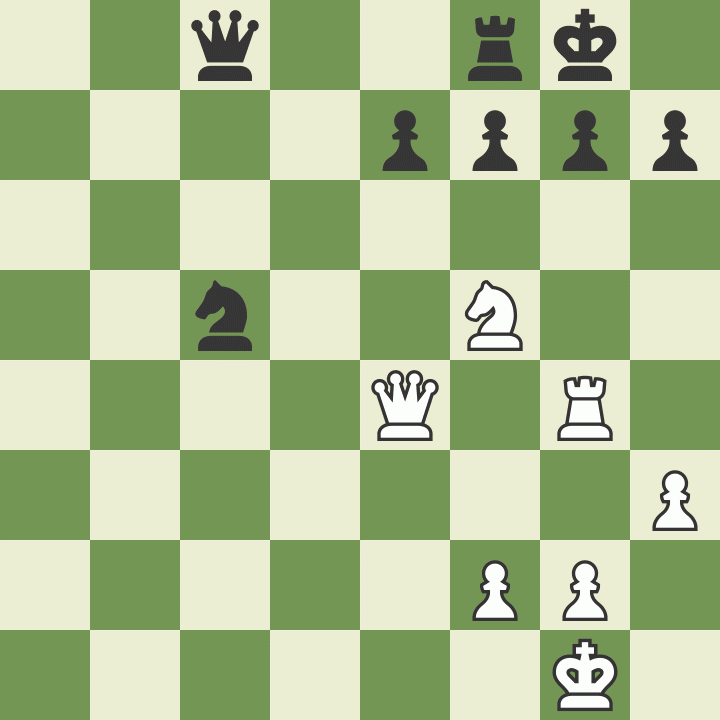
Epaulette Mate
This mating pattern got its name because the position you get on the board from it resembles the epaulets worn by some members of the armed forces on their shoulders. It involves two enemy pieces blocking the two sides of the king (its "shoulders," just like the armed forces ornaments), all sitting on the edge of the board. A queen then comes in to deliver the final blow.

Boden's Mate
If the enemy king has pieces on one of its sides blocking its way, you may have a chance to apply this beautiful checkmate using your bishop pair.
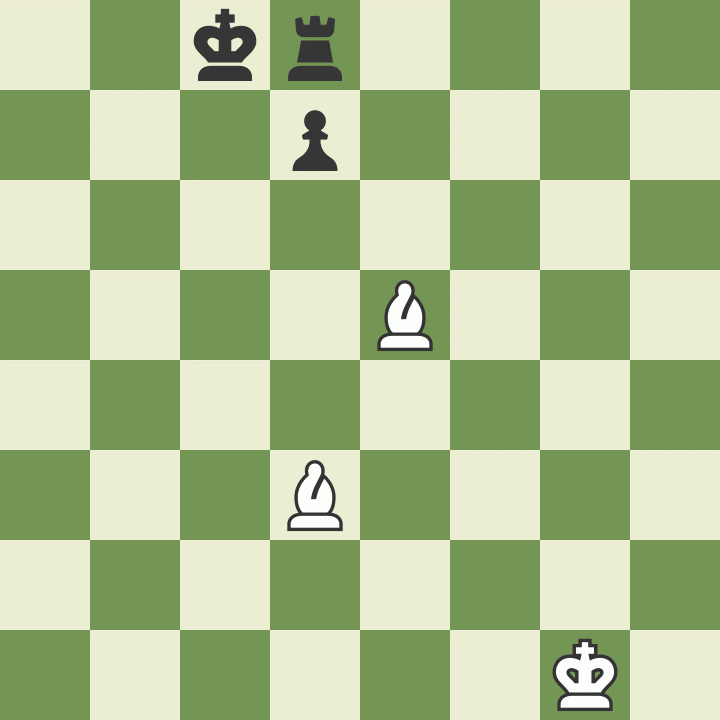
Dovetail Mate
This checkmating pattern happens when your enemy's pieces restrict their king's escape squares, and your queen comes in to finish the game. Notice in the image below how the enemy's forces resemble a dovetail. This pattern gets its name because of its shape.
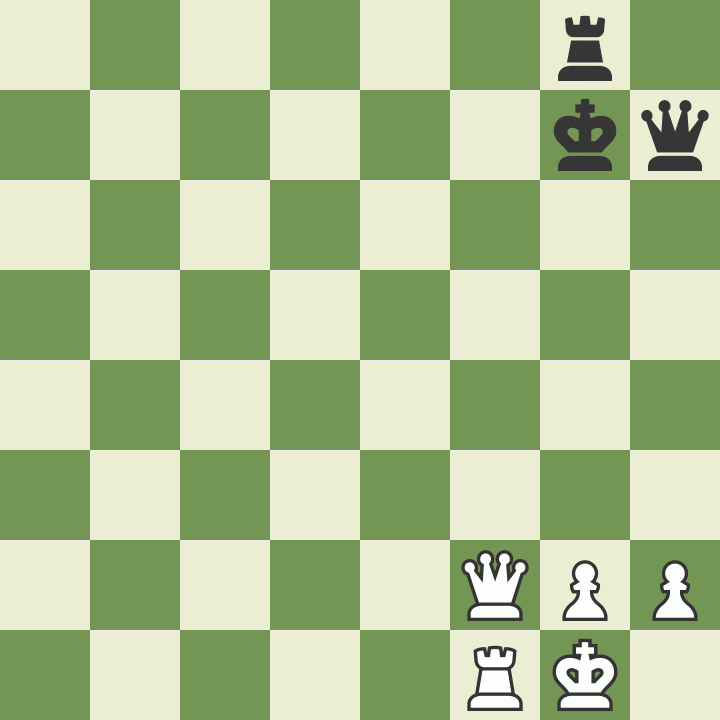
Swallow's Tail Mate
This pattern gets its name because the resulting position resembles the "V-shape" of the tail of a swallow. For this mate, you will need to have your queen supported by any piece attacking the enemy king.
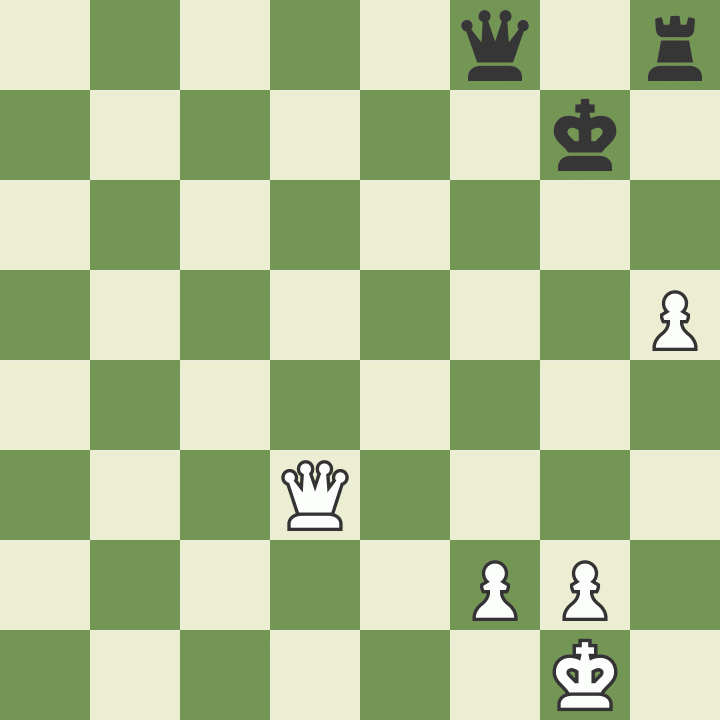
Opera Mate
This mating pattern got its name from the world-famous game played by chess genius Paul Morphy while he was at the opera. You can apply this checkmate with a rook and a bishop.
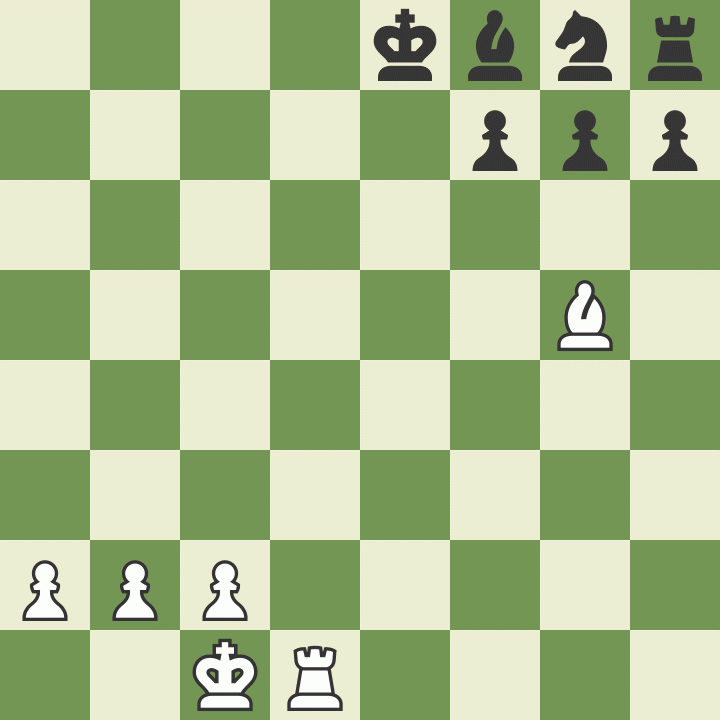
Blackburne's Mate
You can deliver a Blackburne's mate to your opponent's castled king using two bishops and a knight.

Damiano's Mate
This pattern occurs when the queen is supported by a pawn or a bishop to checkmate the opponent.
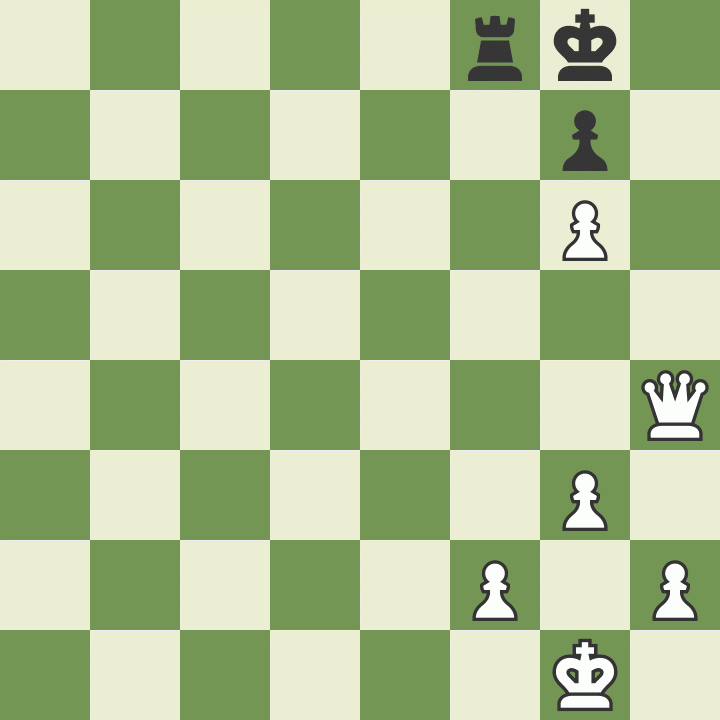
Morphy's Mate
This is another checkmate inspired by the great Paul Morphy. It usually happens against the kingside-castled king since the rook and pawns restrict the king's mobility. A rook and bishop swoop in to checkmate the monarch.
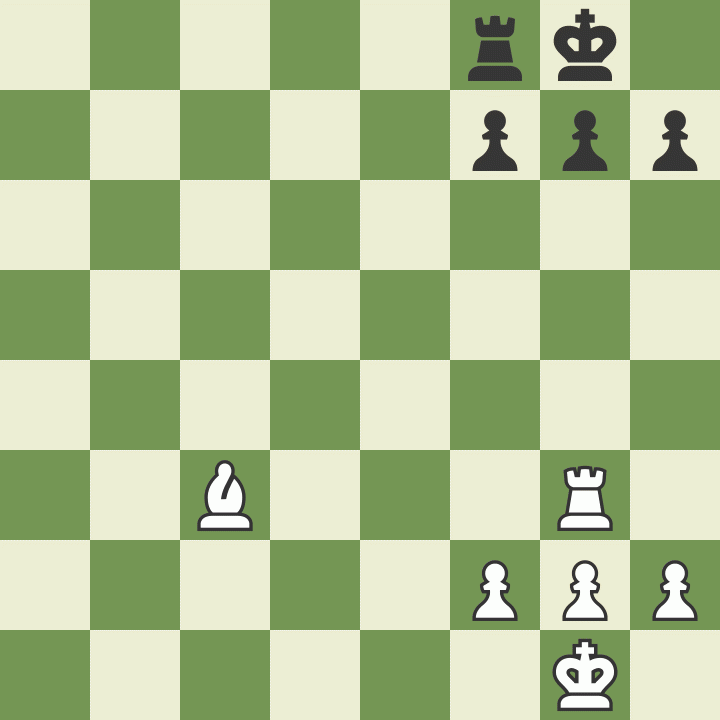
Test Your Skills
Now that you know what checkmating is, it is time for you to test your skills! In the following position, can the white queen deliver checkmate?
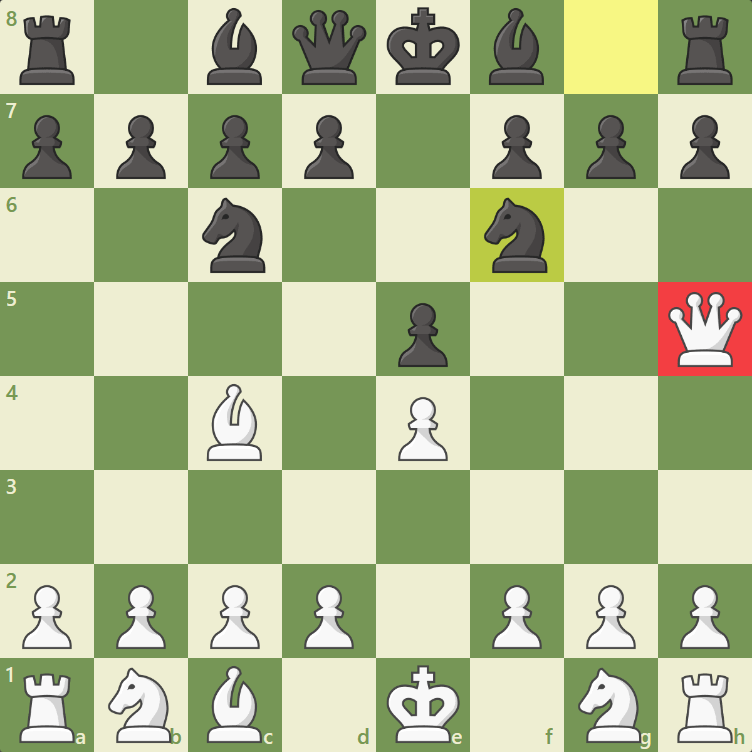
Yes! The queen can deliver checkmate on f7!

Chess is not always about attacking. Sometimes you need to make sure you are not the one being checkmated. White was careless and captured the black queen. How can you respond?
Conclusion
Checkmating is the most important aspect of chess. To improve your chess understanding, study types of checkmates and make sure you can spot and use them during your games. Start a free trial of a Premium account and learn more about checkmating patterns you can use to destroy your opponents!
Watch the Video Lesson
Reading an article is a fantastic way to learn the material, but watching a video lesson can be just as helpful! Check out the short video lesson below to reinforce your knowledge of checkmate!









